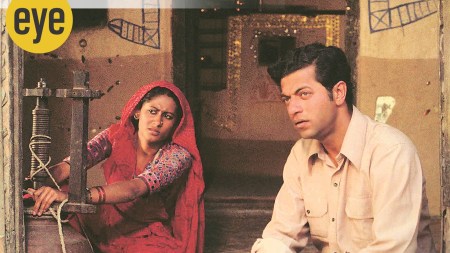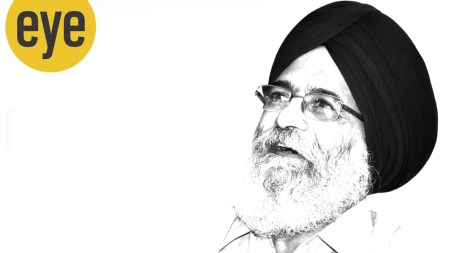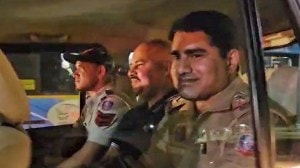- India
- International
How to ensure justice is served in Manipur
Probing riot crimes will test the resolve of state police. It must secure convictions to send a message
 The journey of an investigator starts with registering an FIR. In many cases, especially in cases of violence like in Manipur, an officer would need to record supplementary statements of complainants. (Express File Photo)
The journey of an investigator starts with registering an FIR. In many cases, especially in cases of violence like in Manipur, an officer would need to record supplementary statements of complainants. (Express File Photo) Violence in Manipur has been protracted and devastating. Looting, arson, sexual assault including gang rapes of women, and cold-blooded murders have shaken all of us. Even police armouries have not been spared. Thousands of weapons including automatic weapons like LMG, SLRs with ammunition have been stolen. Such attacks are not only alarming and destructive by their very nature but also embolden criminals elsewhere. They have challenged the very concept of a “state”.
The intensity of the internecine strife seems to have subsided to an extent. This is the time when police start to withdraw officers from public order duties and expect them to take up investigations. Having been overworked for months and facing riotous mobs every day, it takes time for officers to switch to investigation mode. And when the transition takes place in Manipur, the police would be staring at the humongous task of investigating more than 6,000 criminal cases.
The CBI will take over a few serious cases for investigations. But what happens to those not classified as very serious legally but are so from the perspective of victims and citizens? The CBI with its above 60 per cent conviction rate, despite lacking field-level resources would, in all probability, do better investigation. The main reason being the very limited number of cases it will take up for investigation. The officers of the Bureau can also avail of sound legal advice at every step and services of the Central Forensic Science Laboratory, New Delhi. It is not so with Manipur police, though intervention by the Supreme Court may lead to some help from other state police organisations.
The journey of an investigator starts with registering an FIR. In many cases, especially in cases of violence like in Manipur, an officer would need to record supplementary statements of complainants. Undergoing emotional trauma, they initially miss out on important details. The officer then proceeds to the spot and draws a diagram or map, popularly known as “spot panchnama” in Maharashtra.
It is followed by the recording of statements of witnesses. There are many contradictions that an investigator tries to sort out. Then there are interested witnesses who either try to enhance the gravity of an offence or minimise it. I am certain in Manipur there would be many such ones making the task of finding the exact criminal incident very challenging.

I was part of a citizens’ committee on Delhi riots 2020. Its members showed displeasure at police having recorded witnesses’ statements many days after riots. While establishing peace is our first priority, it is also a fact that many citizens come out late to record their statements, scared as they are during disturbances. Once a police officer, a week after riots, came to me with six empty bullets. He said he had fired from his official weapon but was too disturbed to report it immediately. I am not sure if he was speaking the truth. But the point is that violent riots of the kind that Manipur has faced disturb not only citizens but even police officers whose response may also become irrational.
While investigating crime, usually, an officer draws sketches of events, placing all eye witnesses at their described spots and analyses the offence through their eyes. The pattern that emerges about the scene of the crime needs validation and reconciliation with the statements of witnesses. Contradictions seen in mass violence cases sometimes are so significant that I have seen many officers throw in the towel and leaving it to trial courts to decipher the actual event and fix responsibility.
Collection of relevant medical certificates and records is another tough port of call. During a public disorder of this magnitude doctors get overwhelmed by the number of patients and casualties being reported simultaneously. Their immediate concern is to provide medical aid rather than to record documents. Since an investigator needs to be armed with medical records of injuries sustained by victims, the officer persists. These certificates are also crucial for the application of relevant sections of Indian Penal Code. Initially the case may have been registered as of grievous injury, but the doctor may certify it as a simple one. While in case of a death, a detailed postmortem report has to be attached with case papers.
Manipur investigators would also be collecting scientific evidence. A few forensic experts may have visited crime spots. But with 6,000 plus cases, it will take months to collect scientific evidence. Much of it may have already been lost. Weapons have been used on a large scale, some of which have been recovered by police and these need to be examined by ballistic experts. Audio and video tapes have to be studied with reference to instigation and spread of violence. Mobile calls data has to be collected and scrutinised. My experience is that it would take around a year to get forensic reports if the task is not shared with forensic laboratories of neighbouring states and the seven Central Forensic Science Laboratories.
The investigator has another highly sensitive task of arresting the accused, an extremely tough one in the emotionally charged atmosphere of Manipur. Such arrests often lead to further violence and protests. The state has only a small force with around 15,159 police persons and a limited number of investigating officers — around 1,338 consisting of inspectors (265) and sub-inspectors (1,073) as per the Bureau of Police Research and Development (BPR&D).
While tightening the belt of its own police force, the state has to seek investigating officers including women police officers from other states fluent with the language to record statements and prepare documents. They would need legal advisers during investigation and special prosecutors for trials. Custody of offenders may lead to clogging of police lock-ups and jails. Police and prison officials can avail services of special armed forces sent by the Centre for creating temporary lock-ups and jails. Special courts with their staff have to be sanctioned for trials, which are notoriously slow in India. All this would require extra funds.
Technology can be of some help. Summons can be served to witnesses on mobiles. Trials can be online except when crucial witnesses are to depose in courts. While dealing with issues of bail, bonds of good behaviour as per CRPC can be resorted to. However, the hard task of an investigator involving visits to spots and collection of evidence cannot be handed over to the virtual world though computers can help in speedy documentation. Home guards and special police officers can assist investigators in sundry tasks allowing them to concentrate on investigation.
“Crime in India 2021”, published by the National Crime Records Bureau, shows that Manipur has 56.1 per cent conviction rate in offences under the IPC. Manipur police has to secure convictions or the message would go out that human lives do not matter and police armouries are easy targets; that the “state” exists only on paper.
The writer was an IPS officer and worked in CBI and Maharashtra Police
40 Years Ago
EXPRESS OPINION
More Explained
May 19: Latest News
- 01
- 02
- 03
- 04
- 05









































